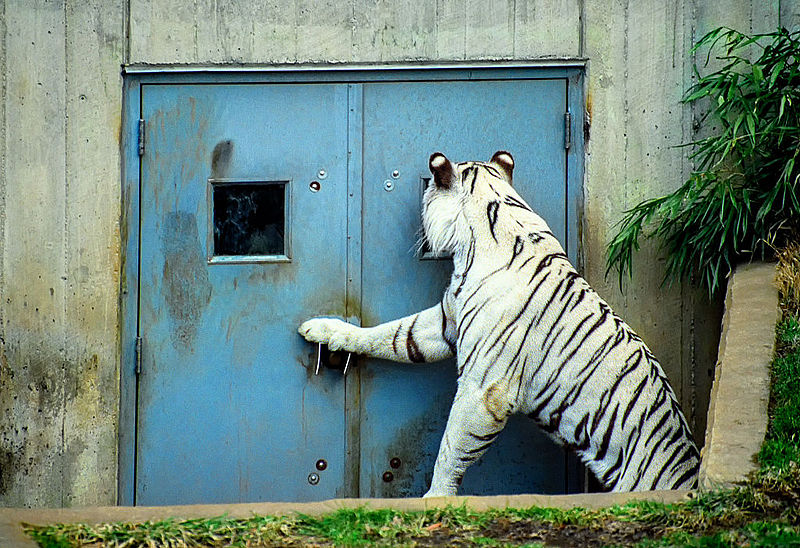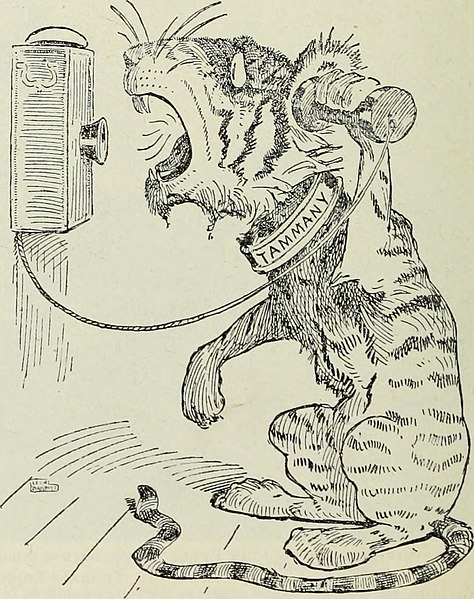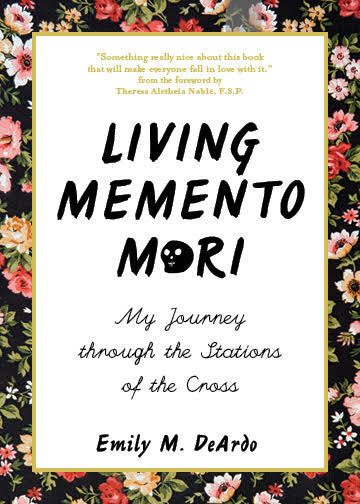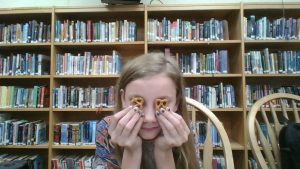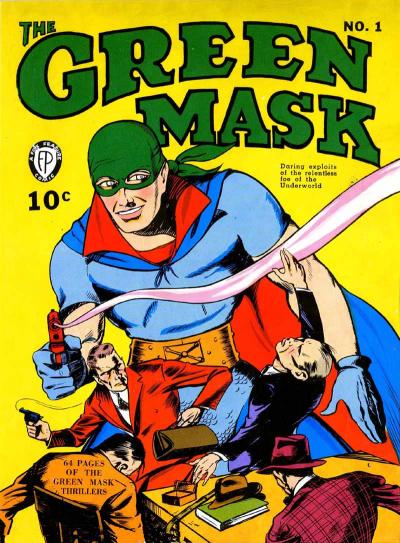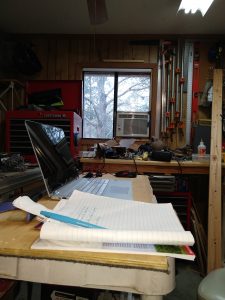My daughter is, last-minute, looking seriously at a college we had no previous experience with. So Saturday night we drove over to campus. The place was desolate — everyone’s been sent home due to coronavirus — though a police vehicle roamed the parking lots. In the waning daylight we parked in a faculty space (no other cars in the lot) and wandered around.
We liked what we saw and grew more curious. Brazenly we walked right up to the cafeteria window and peered inside. We passed a dorm, and I crossed the lawn to a window with the blinds open so we could stand there on tiptoes looking into a ground-floor room. And thus we wandered.
At no time did we fear, at all, that we would get in trouble. It was possible we’d be approached by security and asked what we were doing and requested to please return on a weekday. It was, and remains, unthinkable that our interaction with anyone, at any level, would escalate beyond a firm-but-courteous insistence that if we wished to walk the grounds, we park in the visitors’ lot and refrain from putting our noses up to the windows.
That’s white privilege.
***
I write this because Rod Dreher, with whom I often agree, shared a story of white poverty and black violence in “Race, Poverty, and Privilege” that misses the point.
“White privilege” doesn’t mean all white people are born into lives of affluence. To say racism persists in American society doesn’t mean that black people never commit crimes.
I know that racism persists because I hear it from the mouths of other white people. Am I to think they are lying to me when they make the comments that they do? Are they only pretending to believe the derogatory generalizations they spontaneously assert?
What I am to think of stories like “A White Woman, Racism, and a Poodle”? No matter what possible charitable explanation you can concoct to justify a woman getting repeatedly stopped by the police for a non-offense only when it appears she has a black man in her vehicle, the reality is: She only gets stopped when it appears there is a black man in her vehicle.
What else is that if not racism?
***
A study I think is needed (and may well exist) is the incidence of crime verses the incidence of getting caught, sorted by demographic factors. Such a study would require respondents to fess up to a reality: We all know people — perhaps even our own self is one of them — who has been spared an encounter with the justice system because they didn’t get caught.
Whether it’s over-dramatized trespassing charges (those noses on windows) or minor traffic violations or an officer following-up on a “hunch” and thus uncovering some more serious charge (drugs, weapons, outstanding warrants), if you are more likely to be policed, you are more likely to get caught. And thus: You are more likely to be considered a criminal — even though other people who did exactly what you did continue to hold positions of honor and power in our society.
(White person can verify: Plenty of leading bankers, physicians, politicians, etc., are guilty of assorted misdemeanors involving drugs, alcohol, and weapons offences that are only ever uncovered if the police decide to do some thorough searching, and therefore said persons now in power never get caught and thus go through life on the Upstanding Citizens Track while so-and-so who did get caught slides onto the Ne’er-Do-Well Track. The difference isn’t in bad behaviors, it’s in whether you get caught.)
***
White privilege is the freedom to go through life being presumed innocent until you make a concerted effort to prove to the police otherwise.
I am well aware that there is more than just a question of race wound up in the privilege of being presumed innocent. Being female increases your odds. Being well-dressed and well-spoken increases your odds. Having the social skills to fit into your milieu in a way that puts people at ease increases your odds.
Still, when everything else is equal, being white works in your favor.
***
Police brutality does affect white people. It’s an issue that transcends race and class.
Likewise, violence against law enforcement officers is a real thing. An epidemic of murders and suicides among our young men is a real thing. The breakdown of the family, with its significant repercussions on all aspects of social life, is a real thing. Lack of protection for victims of domestic violence is a real thing. Lack of social support for vulnerable persons across the spectrum is a real thing. There are many, many different ways that human beings hurt themselves and others terribly.
Acknowledging that racism is real does not erase any of that.

Wikimedia Image of the Day by Reinhold Möller, CC 4.0. The only relationship between this image of a female Phoenicurus ochruros and this blog post is that they lived on the internet on the same day. But I’m confident skilled readers can find some way to read non-random significance into it.

![On Killing: The Psychological Cost of Learning to Kill in War and Society by [Dave Grossman]](https://m.media-amazon.com/images/I/51xlYFvYCYL.jpg)



